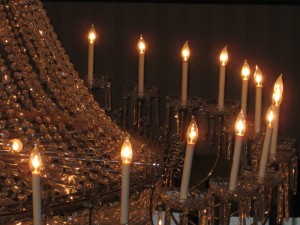We’ve reached the Winter Solstice, shortest day of the year in the Northern hemisphere, bookended by the longest nights. Oh my. Last night brought a lunar eclipse as well, though the heavy cloud cover discouraged me from getting up in the middle of the night to watch.
I’ve observed other eclipses of the moon, fascinated to see the shining orb slowly overtaken by shadow. In spite of understanding the phenomenon, it’s an emotional experience to see it happen. There is a kind of visceral drama in its disappearance and the wait for that first sliver of its return.
The eclipse is similar to the drama of the winter solstice, but in condensed form. The light slowly disappears and we anxiously await its return. As with every kind of darkness, we need the gift of faith and the reassurance of ritual to make it through.
The sun at its farthest point from us, the winter just beginning, we have a long way to go. For the most part we accept the rhythm of the seasons, adjust to the routines shaped by shorter days and longer nights. And in celebrating the completion of these longest nights we know that this, too, shall pass.
The light returns incrementally, but the cumulative effect of those small changes transforms the seasons. Tomorrow the earth and sun begin their course toward summer—a marvelously hopeful thought, however long the journey may be.
It has me thinking of the power of committing to steady movement in a particular direction over time. Apparently it’s natural to remember that this time of year. The rebirth of the sun through the Winter Solstice, the rebirth of divinely inspired possibilities for human life through Christmas, the rebirth of the year and all that it contains through New Year’s—the idea of renewal is a thread weaving through all these holidays. Here in the dark of winter is energy toward rebirth. Hallelujah!
What kinds of new possibilities might be germinating in the dark?


[…] This post was mentioned on Twitter by Glynn Young. Glynn Young said: RT @scbwrites: Winter Solstice and Rebirth: http://bit.ly/iirIbz […]
Although I missed the lunar eclipse, I normally keep pretty close track of the moon on my morning walks, which have been diminished due to a foot injury. But what I really wanted to say is that I found this post very comforting, during this first Christmas without my mom, in a way that traditional Advent/Christmas posts have failed to move me.
Looking for those “new possibilities” that “might be germinating in the dark.”
Thanks for your comment, Megan. I’m sorry for your loss of your mom, and glad to know that this helps in some way. Holidays can be so complicated. Sometime you might like to look at the previous post, which is a prayer for those who are grieving at the holidays. I hope there will be light during this season for you.
Susan:
I just want to thank you for your blog. As the year draws to a close I look back and think of the blessings that I have received. Your blog has been a blessing. Simple truths profoundly spoken, that is how I have experienced it and have been the better for it. Thank you and may God return the blessing you have been 10 fold in the coming year.
John Arnold
The Practical Disciple
Your comment is a blessing, and a lovely Christmas present, John. Thank you. I hope you can rest and enjoy Christmastide with your family, and that the new year holds wonderful things in store for you. I appreciate the good things you offer at The Practical Disciple, and look forward to your writing there that the new year will bring.